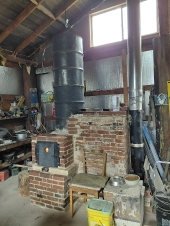
 3
3




 3
3




 7
7




 4
4




 2
2




Julian Adam wrote:Scott, Cristobal, great inputs. I will have to review my initial idea and make the bottom of the riser in dense firebrick. I guess my riser will beco me a bit higher as I already have the IFB.
.
 5
5




Rocket surgeon and soil builder... healthy plants are all about the soil.
- My 6" Batch Rocket specs and materials list: https://permies.com/t/248275/Batch-Rocket-Double-Skin-Bell
- Batch Rocket detailed build thread with Q&A: https://permies.com/t/238503/Batch-Rocket-Build
 3
3










 4
4




Julian Adam wrote:...Enough questions asked for now and Glenn, sorry for asking so many in your thread!...
Rocket surgeon and soil builder... healthy plants are all about the soil.
- My 6" Batch Rocket specs and materials list: https://permies.com/t/248275/Batch-Rocket-Double-Skin-Bell
- Batch Rocket detailed build thread with Q&A: https://permies.com/t/238503/Batch-Rocket-Build






 8
8




Rocket surgeon and soil builder... healthy plants are all about the soil.
- My 6" Batch Rocket specs and materials list: https://permies.com/t/248275/Batch-Rocket-Double-Skin-Bell
- Batch Rocket detailed build thread with Q&A: https://permies.com/t/238503/Batch-Rocket-Build

|
Give a man a gun and he'll rob a bank. Give a man a bank and he'll rob everyone. Even tiny ads:
Rocket Mass Heater Resources Wiki
https://permies.com/w/rmh-resources
|




